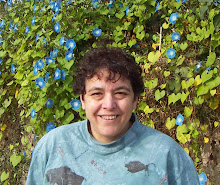 We flew into Gatwick when we came back from Croatia. That airport is located basically south of London and can be about an hour by car. You can take a cab and pay a lot, or a bus and have some space issues lugging your suitcase, but for ease of travel, catch the Gatwick Express to Victoria Station. It leaves the Gatwick South Terminal (there is a tram or bus service between the terminals) every hour and costs
We flew into Gatwick when we came back from Croatia. That airport is located basically south of London and can be about an hour by car. You can take a cab and pay a lot, or a bus and have some space issues lugging your suitcase, but for ease of travel, catch the Gatwick Express to Victoria Station. It leaves the Gatwick South Terminal (there is a tram or bus service between the terminals) every hour and costs about $15.
about $15.

For those of us who generally do not use train service in the US, service like this are pretty amazing. Here in the US, the Northeast Corridor between Washington, DC and Boston has some pretty regular and often
 service, but the BritRail system is amazing.
service, but the BritRail system is amazing.
London has five rail stations, each providing service out from London in a spoke-like system. Victoria Station is located in the southern section of the center of London and provides access to areas to the (duh) south. Graham used the St. Pancras station to catch his train to Nottingham to the north.



How many of you ever read the Paddington Bear stories...about a poor little orphaned bear who is sent by himself on the train to his new home.....anyway, you can see a small statue there.
Each station has an underground access, so all you need to do is go down down down to be able to access the local transportation service.
************************************************************************
Entrances to the Underground stations vary in terms of construction styles. This one is pretty busy so it has a lot of space. There are also some shops right inside the entrance.

Automated ticket booths enable you to quickly purchase tickets. The machines use paper currency as well as credit cards. We discovered there, once again, that the US credit cards do not work because they do not have a chip embedded (yet). Fortunately, each station also had at least one window with a person to give directions as well as sell tickets. We found that buying a daily pass for each of the 3 full days we were in London saved us considerable money. When I was there 10 years ago and was in London for a full week, I bought a week's pass.

Some stations had escalators but most still have steps and most are not handicapped accessible, although I noticed more this time than 10 years ago.

Mind the Gap = Watch your step... a simple warning but it just sounds so nice with a British accent.


Maps in the station as well as in each underground train car make it easy to know where to change lines and which train to board, if there are several lines at the same station.



This was for a cell phone plan.
I was amused to see an ad for Jack Daniels in several underground stations.


Some signs referred people to check the Underground's website for weekend line closures for maintenance. The Saturday we were there one of the main central lines was shut for maintenance and we still could get everywhere we needed to go, although the routing was more out of the way and it took a bit longer.


Crowds varied by time of
 day as well as which line and the areas of service. The trains run very often, in fact this seems like an amazingly effective people mover.
day as well as which line and the areas of service. The trains run very often, in fact this seems like an amazingly effective people mover.*****************************************************************************

UPS advertises its delivery service is worldwide. We saw this truck parked for his delivery along the Embankment in London and yes, he was wearing his brown uniform shorts.

We rode the buses in Dubrovnik quite a bit. Some were air conditioned.....many were not. We could buy our ticket on the bus but if we went to a small roadside kiosk that also sold candy, soft drinks and magazines, we could buy a discounted ticket. The tickets were fed into a small machine when you entered and returned to you. That stamped the ticket and if you needed to change buses or even wanted to return back on the same route within an hour, the ticket was still honored.


The classic double decker London buses are still very much in use although we did see some of what I call an accordion bus...basically a double bus with a flexible section connecting the two hard bodies, to aid in corner turning.

Cars for hire everywhere. Some of the London cabs were painted, advertising some tour or travel consideration. Many cabs, like the pink one, advertised travel to other countries in Europe.


When we stopped at the woolen mill in Scotland, so Graham could order a kilt, the town was having an antique car rally.

As you can imagine, what with the small roads and the tight parking spaces, motorcycles and scooters are very popular.

So many car models in Great Britain and Croatia are not commonly seen here in the US. And some that are considered to be quite high end here are pretty common there.




This Ferrari, parked outside our hotel in the Kensington area in London, was our favorite to spot.
Waiting for the ferry from the Isle of Mull back to Oban, we were amused to see both newer and older models of VW buses.


































